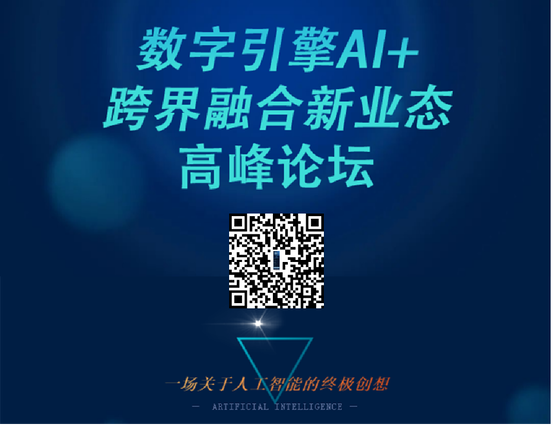Innovation and
|
Emerging TechnologyInnovations in China
This coming October 30th, as organized by the Brice Valley Entrepreneur Elite (International) Club ,co-organized by Shanghai International Automobile City Shimao Industry Co., Ltd. and sponsored by Anting Town People's Government, Jiading District, Shanghai, Shanghai Jiading Economic Commission and Jiading District industrial Investment Promotion Service Center, industry leaders are having dialogue in a summit for "Digital Engine AI+, Cross-border Integration" to explore the contemporary issue of how AI is taking root in various fields on new economics and how traditional enterprises are actively exploring the use of AI to promote industry transformation and upgrading.

This new phenomenon of AI being utilized in innovation and industry transformation is a major reason why industry leaders in China are creating dialogue at this critical moment. This phenomenon also exactly reflects the themes focused by Innovation’s Crouching Tiger, authored by Dr. Jili Chung, one of the key speakers in this summit, that AI and big data (as well as other emerging technologies) are shaping China’s innovation ecosystem at a rapid-fire speed.
AI is Facilitating Innovation Projects and IP Monetization China, like a few other countries worldwide, is experiencing an industrial revolution driven by AI and other emerging and disruptive technologies, such as big data and 5G technology. China is now leading in patent applications and thriving in business innovations from these emerging technologies. For example, more than three Chinese players (i.e., PingAn, Alibaba, and Tencent) have gained a strategic position through their patent portfolios for innovations relating to applications of AI and big data in fintech. In many aspects, AI technologies have the potential to enhance, unlock, exploit, and facilitate the findings of IPs’ intrinsic values, and thus facilitate the underlying transactions for IP commercialization and speed up innovation life cycles to generate paybacks of R&D investment in a short period of time. For example, AI combined with data mining technologies may help to conduct patent searches more efficiently. Until a few years ago, the preparation of a citation map for a patent could take weeks. Now, it is only one click away. In addition, AI supervised learning can assist professional appraisers to determine the value of a patent more objectively and consistently. These improvements are increasing the confidence of parties towards innovation projects and IP monetization deals and are increasing deal flows in the financial system. About a dozen startups in China are now building their business models around such AI applications in patent search services. Some leading teams have already distinguished themselves by integrating AI or big data valuation modules into their databases. A more detailed survey on them was conducted by SpringIP and published in Innovation’s Crouching Tiger (available at ictiger2020.com) Emerging Technologies for Mitigating Innovation Risks The US-China trade war has taught Chinese business leaders that IP risk is one of the most important risks in innovation. Emerging technologies, especially AI and blockchain technology, are expected to mitigate such IP risks. For example, AI and blockchain technologies can connect patent information deposited at various relevant authorities in different locations. A patent appraiser was once needed to look into various IP authorities, financial authorities, and commerce administration authorities to ascertain whether or not the patent was subject to any encumbrance of rights. Missing a piece of information could result in a miscalculation of the patent’s value. Comprehensive due diligence investigations require significant time and resources; therefore, an appraiser is often needed to balance the risk against the involved cost. Now such risk may be mitigated by the previously mentioned patent search service providers by utilizing AI and data management technologies to gather information concerning a patent. Meanwhile, blockchain characteristics of timestamping and resistance to retroactive alterations are expected to reduce ownership disputes arising from patent inventorship or chains of titles in transactions.
Is the Potential Limited?
Is such adoption of AI for innovation a potential business? Probably not. Although the ongoing development of this area in China is likely to help ease the difficulties in IP valuation, and thus facilitate innovation, iso far the business potential of such AI application in an innovation ecosystem seems limited. Business norms suggest that the use scenarios, not the tool alone, will determine the value of a tool. Just like the individuals who sold shovels during the California Gold Rush – if they were not selling this particular item in that specific time and particular region, the sale of the shovels would not have been nearly as profitable, no matter how efficient or advanced they were. Likewise, the same applies to the profits made by miners in the recent bitcoin rush. The tools being sold needed to be placed within a particular context where users have a burning need for it, in order for it to be profitable. Similar to AlphaGo, Go Game’s current AI application does well in replacing human brain functions under a preset rule and in a limited area. AI-enhanced IP search services now well-support a narrow technical function in the IP-related work of a company. However, for AI application to help with business decisions more generally, it will need to cover interactive rules and integrate information from multiple aspects that may impact business judgment.
Satisfying a Burning Need
Under the current economic circumstances, most companies have a burning need to upgrade and transform, to meet the new global economic orders. An AI-enhanced IP search tool could indeed save money and increase efficiency, but it still leaves gaps to meet that burning need, leaving the solution incomplete. A more complete solution calls for an exercise to integrate big data in market trends, IP strategies, and intelligence of the technology or industry supply chain. As such cross-border thinking and interdisciplinary training are required for this exercise, the startup teams aimed at this solution are still very rare in the market. Given the circumstance, how does one overcome these challenges and achieve the goal of such integration? Dr. Chung will share his thoughts on potential solutions with other industrial leaders in this summit. If you are interested, send an email to [email protected] with your company, name, position, and phone number. You can also scan the QR code below to sign in.
1 Comment
|
Categories
All
|



 RSS Feed
RSS Feed
